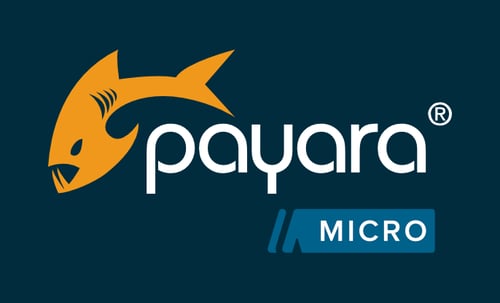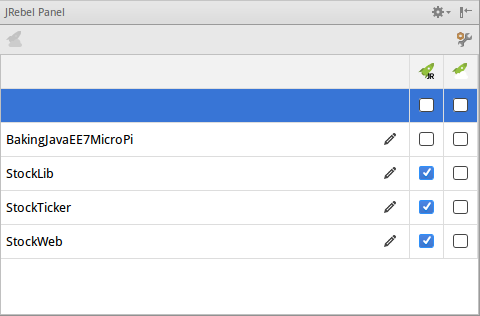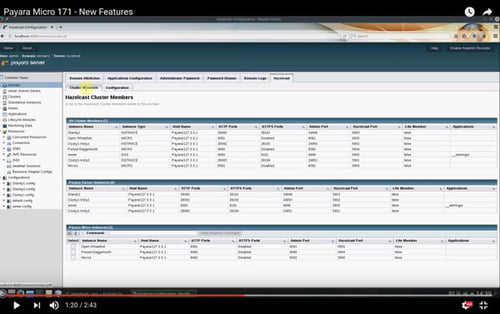Posts tagged Uber JAR
Payara Micro 5によるUber JARの作成
Published on 18 May 2021
by Fabio Turizo
Topics:
What's New,
Maven,
Payara Micro,
Microservices,
Docker,
Uber JAR,
DevOps,
Japanese language
|
0 Comments
Payara Microでは、Webアプリケーションを自己完結型で簡単に実行することができます。2016年5月のPayara Serverリリースからは、WARファイルの内容とPayara Microを構成するクラスやリソースを束ねる “Uber JAR” を作成する簡単な方法があります。
この “Uber” Jarは、Dockerコンテナ内でアプリケーションを実行するための最良の方法ではないことに注意してください。アプリケーションに小さなコード変更を加えるたびに、バイナリ全体のアップデートが必要になるためです。より良い方法は、Payara Microインスタンスを起動して、インストールが必要なアプリケーションを指定することです。詳細については Payara Micro Docker Image documentation をご覧ください。
(最終更新日 2021/04/06)
Speed up Microservice Development with JRebel and Payara Micro
Published on 14 Dec 2017
by Mike Croft
Topics:
Maven,
Payara Micro,
Microservices,
How-to,
Uber JAR
|
0 Comments
Admitting When You’re Wrong
Just recently, I have had to admit being wrong. Very wrong. Way back at the start of October, I was feeling the familiar sensation of panic and dread that only happens right before I need to give a presentation that includes a demo! In the end, there were major problems with the AV setup in the room I was allocated, so even arriving as early I could to set up didn’t give the techs enough time to hook up my laptop successfully.
AWS Native Discovery with Payara Micro
Published on 23 Nov 2017
by Mike Croft
Topics:
Java EE,
Payara Micro,
Microservices,
Hazelcast,
Caching,
Cloud,
Amazon Cloud,
Uber JAR,
Cloud-native
|
1 Comment
Both Payara Server and Payara Micro can cluster together and share data using Hazelcast. Out-of-the-box, there is no configuration needed, since Hazelcast uses multicast to discover and join other cluster members. However, when running in cloud environments like AWS, for example, there are a lot of things which can stop discovery being quite so straightforward. The key thing is that Multicast is not available, meaning another discovery strategy is needed; the most common generic alternative is to use TCP, but this assumes that you know at least the intended subnet that your cluster members will be in ahead of time.
Using the Payara Micro Maven Plugin
Published on 03 Aug 2017
by Mike Croft
Topics:
ActiveMQ,
JMS,
Maven,
Payara Micro,
Microservices,
How-to,
Uber JAR
|
4 Comments
Payara Micro provides build tool plugins for Maven and Gradle. The plugins allows to start/stop/reload Payara Micro instance and package uber jar bundle of application. To illustrate the use of Payara Micro Maven Plugin, I'll be revisiting my earlier blog on another feature of Payara Micro - the ability to use Payara Micro as a JMS consumer.
Payara Micro JCA Adapters - Apache Kafka
Published on 08 Jun 2017
by Matthew Gill
Topics:
What's New,
Maven,
Payara Micro,
Microservices,
Cloud,
Uber JAR,
Cloud Connectors
|
11 Comments
In this blog, which follows on from the introduction to Cloud Connectors in Payara Micro, we'll guide you through the process of setting up Payara Micro as a Kafka Client, which can produce and consume data from Apache Kafka.
Payara Micro 171 - New Features Demo
Published on 28 Apr 2017
by Andrew Pielage
Topics:
What's New,
Payara Micro,
Microservices,
Hazelcast,
Uber JAR,
MicroProfile
|
0 Comments
This quick vlog shows off a few of the recent features and changes we added to Payara Micro in the 171 release. In it, we’ll cover sending asadmin commands to Micro instances from the DAS, how config changes in a pre-existing Payara Micro domain now get packaged up when creating an Uber JAR, as well as a couple of quality of life changes we’ve added.
Mike Croft for TechTarget -Configuration JSR, microservices & Docker
Published on 13 Dec 2016
by Dominika Tasarz
Topics:
Java EE,
Payara Micro,
Microservices,
Docker,
Uber JAR,
MicroProfile
|
0 Comments
In his second interview for TechTarget, Mike Croft - Payara's Support Engineer - talks about the benefits of having a configuration standard as part of Java and Java EE. Mike is also sharing his views on how container-based technology is changing the way application servers are developed, along with how microservices are being deployed.
Working with External Configuration Files in Payara Micro
Published on 26 Oct 2016
by Mike Croft
Topics:
Payara Micro,
Microservices,
Docker,
Uber JAR
|
0 Comments
It is relatively common for applications to need additional configuration files outside of what is provided in Payara Server or Payara Micro. If you are used to using a custom security realm in Payara Server, for example, it may not be immediately clear how you can use the same file with applications deployed to Payara Micro.
Creating Uber JAR with Payara Micro 5
Published on 21 Jun 2016
by Fabio Turizo
Topics:
What's New,
Maven,
Payara Micro,
Microservices,
Docker,
Uber JAR,
DevOps
|
5 Comments
Payara Micro allows you to run web applications in a self-contained and easy way. Since the release of the Payara Server in May 2016, there is a simple way to generate an "Uber" JAR that bundles the contents of a WAR file and the classes and resources that compose Payara Micro!
Note that this "Uber" Jar is not the best way to run your application in a Docker container as it requires an update of the entire binary for each small code change you make in the application. A better solution is just to start a Payara Micro Instance and point to the application that needs to be installed. More information can be found on our Payara Micro Docker Image documentation.
(last updated 06/04/2021)







